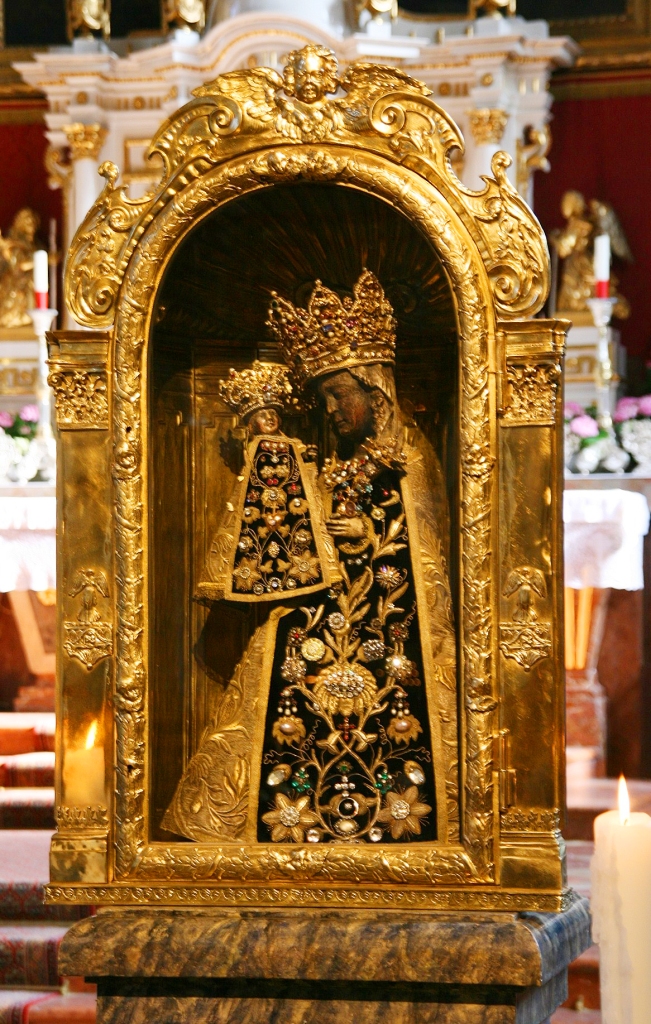The Black Madonna of Altötting is one of almost five-hundred enshrined images of a dark-colored Mother Mary holding baby Jesus located across Europe. Located in Altötting, Bavaria, “Our Lady of Altötting” was carved from linden wood in ca. 1330, after its predecessor was lost in Hungarian raids, and gained widespread prominence in the late fifteenth century after several reported healing miracles circulated. The reports of such miracles continue to bring around one million pilgrims a year to the National Shrine of Bavaria, where the Black Madonna of Altötting resides.
There are many interpretations of the term “Black Madonna” given to certain dark depictions of Mary; some symbolic, others literal. Explanations range from connections to the “mother-goddess” figures of pre-Christian religions, where the use of certain dark materials indicates an intentional depiction of an African or Levantine phenotype, to exposure to the elements, where coloration is the result of centuries of aging in sooty, candle-lit rooms.
On the official tourism site for the Shrine, the Madonna of Altötting is described as having been blackened by “the natural darkening process of the wood” and the “soot of all the candles lit throughout the centuries;” however, this Madonna has been revered as a “Black Mary” since the early seventeenth century. While the natural aging process may indeed have played a role in the darkening of the statue, it is clear that Our Lady of Altötting has been associated with the title “Black” for many centuries. For many, the color of these statues is dependent upon the perception and history of the color black, rather than reflecting a literal representation of race. The color of Black Madonnas has become integral to the Madonnas’ legitimacy, with the blackness itself serving as an important sign of antiquity, of ties to the Christian homeland, and of claims of presenting a “true portrait” of Mother Mary. Even explanations that attribute coloration to aging and candle soot can thus contribute to the legends of such enshrined images.
While there is no single interpretation or explanation for the color of the Black Madonna of Altötting, nor of most other Black Madonnas, viewers should recognize that the blackness itself, even without clear explanations, helps define such venerated images as unique and esteemed.
Elaina Knipple

Source: Siddhartha Finner, Gnadenbild, Gnadenkapelle Altötting (23 February 2011) via Wikimedia Commons.

The Black Madonna of Altötting (ca. 1330) by Elaina Knipple is licensed under a Creative Commons Attribution-ShareAlike 4.0 International License. Permissions beyond the scope of this license may be available at https://blackcentraleurope.com/who-we-are/.